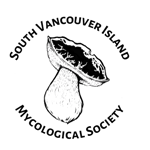MIMSY or Mid Island Mycological SYmbionts
MIMSY or Mid Island Mycological SYmbionts are kicking off with a meeting in July to provide a meet-and-greet, plan for fall activities, and talk about mushrooms. Bring your mushroom finds and mushroomy ideas to the meeting!
This is the first of many planned meetings by the Mid- Island committee of SVIMS (a.k.a. MIMSY) for 2025. With our structure solidified and the support of SVIMS, we will host local mid-island meetings, forays, workshops, and speakers! When not hosting speakers ourselves, we will be streaming SVIMS club meetings and joining in on the fun happening South island. We aim to cover the area between Parksville and Campbell River, but may expand to include future membership needs. Join us as we discover and meet to discuss the fungus among us. Have a mushroom you want to identify, show off, or talk about? Wonderful! Bring it to the meeting. Interested in volunteering? Great! Please come to the fall -prep kick-off meeting!
Planned Meetings:
Location: North Island College, Campbell River, Room C270
Thursday, July 3, 5:30 PM to 7:30 PM – Theme: Meet-and-greet, planning, mushroom finds
Thursday, August 7, 5:30 PM to 7:30 PM – Theme: Speaker, TBD (awaiting confirmation)
Bear with us as we get going with a room that is tech-capable; for now, we will be in-person only but recording any speakers for posting afterward! We are working with NIC to secure an equipped room for September.
SVIMS Foray to the Rae Leigh Addition April 2025

In 2024, BC Parks Foundation acquired a 15-acre parcel that adjoined John Dean Park. The parcel is slated to become part of the park.
SVIMS was invited to survey the biological diversity on this tract. On April 26, 2025, a group of SVIMS members made their way into the hilly area. (See adjoining map–The red outlines the addition, the green is John Dean Park.)
The walk was arranged by Mel Hesz. David Walde, Elora Adamson, Vail Paterson, and Ann McCall led the foray.
Results were collected in an iNaturist project that SVIMS set up for the tract. About 75 different species were recorded. Nearly 30 of these species were fungi.




